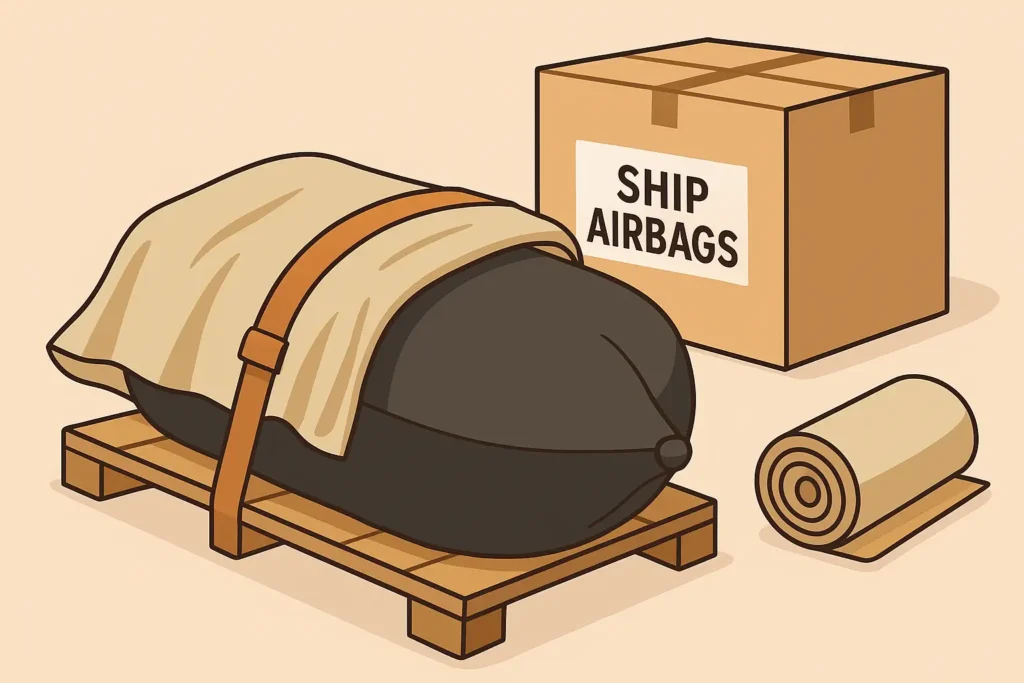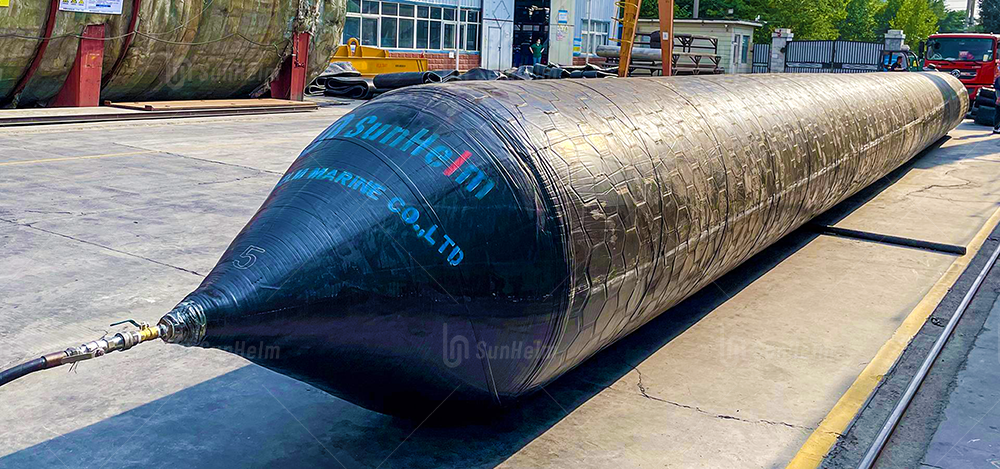If you work in a shipyard, at a port, or in the marine salvage industry, you might already know how common ship airbags are. These large inflatable rubber bags help vessels launch, land, and even get rescued when stuck. But one common question remains: is it safe to ship airbags across long distances?
The short answer is yes—ship airbags are safe to transport and use, as long as you follow correct packaging, shipping, and handling guidelines. In this article, we’ll explain what ship airbags are, how they are shipped worldwide, and how to use them safely in marine operations.
What Are Ship Airbags?
Ship airbags, sometimes called marine airbags or salvage airbags, are high-strength rubber bags that can be inflated to lift and move heavy vessels. They are mainly used in:
- Ship launching – rolling a vessel from land into the water.
- Ship landing – safely bringing a vessel back to shore.
- Marine salvage – lifting stranded or sunken ships during rescue operations.
- Heavy lifting – moving large structures in shipyards or ports.
Unlike fixed equipment, ship airbags are flexible, reusable, and cost-efficient, which is why shipyards around the world prefer them.
Is It Safe to Ship Airbags?
Yes. Shipping ship airbags is safe because they are usually made of layers of synthetic rubber and fabric. They do not contain hazardous materials and are classified as general cargo.
When companies ship airbags worldwide, they usually send them by sea freight. The airbags can be deflated, folded, and packed into bundles, which makes them easy to load into containers. With proper packaging, they are resistant to moisture, sunlight, and physical stress during transport.
However, just like any large cargo, there are still best practices you should follow.
How to Ship Airbags Safely
If you plan to ship airbags internationally, follow these guidelines to ensure safety and efficiency:
- Deflation and Folding
- Airbags should be fully deflated.
- Fold them carefully to reduce size.
- Protective Packaging
- Wrap with canvas or plastic sheets to prevent puncture.
- Use wooden crates or pallets for larger orders.
- Moisture and Sunlight Protection
- Keep packaging dry.
- Use covers to block direct sunlight if storage is long-term.
- Clear Labeling
- Mark the weight and dimensions.
- Label as “ship airbags” for easy customs clearance.
- Secure Transport
- Strap bundles firmly inside the container.
- Avoid placing sharp or heavy objects on top of airbags.
By following these steps, ship airbags packaging and shipping remain safe and reliable.

Using Ship Airbags Safely in Marine Operations
Transporting the airbags is only the first step. To get the best performance, you must use them correctly. Here are some safety tips for ship airbags in marine operations:
- Choose the right size and type based on vessel weight and launching plan.
- Inspect airbags before use for wear, cuts, or weak spots.
- Inflate gradually and monitor pressure levels.
- Distribute load evenly by using multiple airbags under the ship.
- Keep personnel at a safe distance during launching or salvage.
- Train staff to follow manufacturer guidelines.
Following these practices makes marine ship airbags one of the safest tools in ship launching and salvage.
Compliance and Documentation
When you ship airbags overseas, most logistics companies treat them as normal cargo. Still, it is best to prepare:
- A packing list with details of size and weight.
- A product certificate from the manufacturer.
- A shipping document such as a bill of lading.
These papers help avoid customs delays and prove that your ship airbags meet safety standards.
Shipping Methods and Costs
- Sea Freight (most common): Affordable for large shipments. Ship airbags can be bundled and loaded into containers.
- Land Transport: For local delivery from factory to port.
- Air Freight (rare): Only for small emergency orders due to high cost.
The total cost depends on the quantity, size, and destination. Most suppliers offer worldwide shipping of airbags and can recommend the best option.
Conclusion
So, is it safe to ship airbags? The answer is clear: yes. With proper packaging, documentation, and handling, ship airbags are shipped worldwide every day without issues.
Whether you use them for launching, salvage, or heavy lifting, these airbags remain a safe, efficient, and reliable tool for the marine industry. If you need expert guidance, always consult a trusted manufacturer or logistics provider.
Frequently Asked Questions (FAQ)
1. Are ship airbags safe to transport?
Yes, ship airbags are deflated, folded, and packaged securely, making them safe for shipping worldwide.
2. What packaging is recommended for ship airbags?
Protective wrapping with canvas or plastic, wooden crates or pallets for bulk orders, and clear labeling of weight and size.
3. Can ship airbags be shipped by air?
Yes, but it is not common due to their large size and cost. Most companies choose sea freight.
4. How can I ensure safety during ship launching with airbags?
Inspect airbags before use, inflate slowly, distribute loads evenly, and keep workers trained and at a safe distance.


